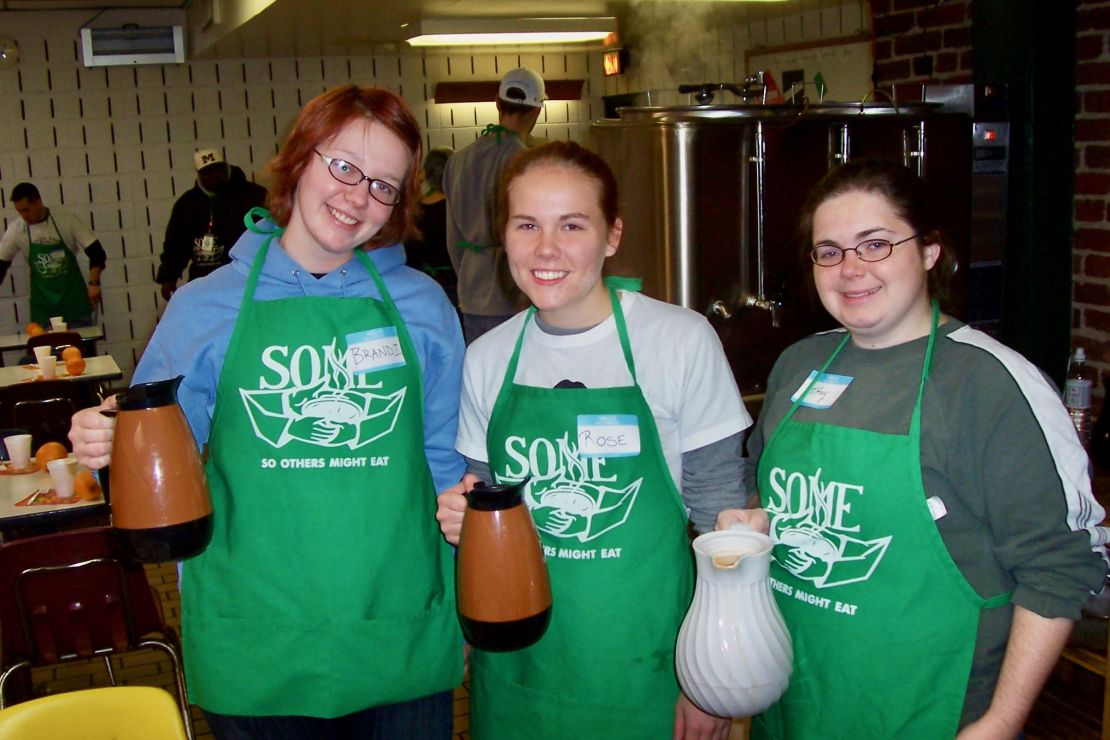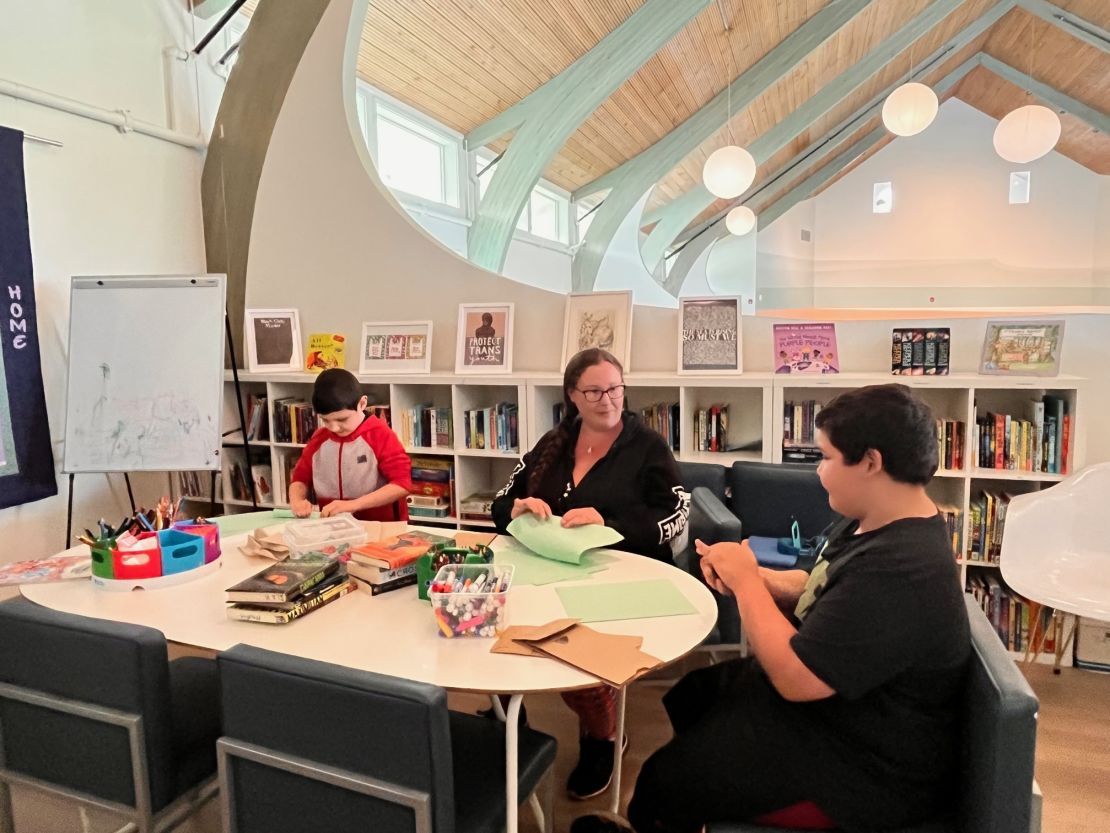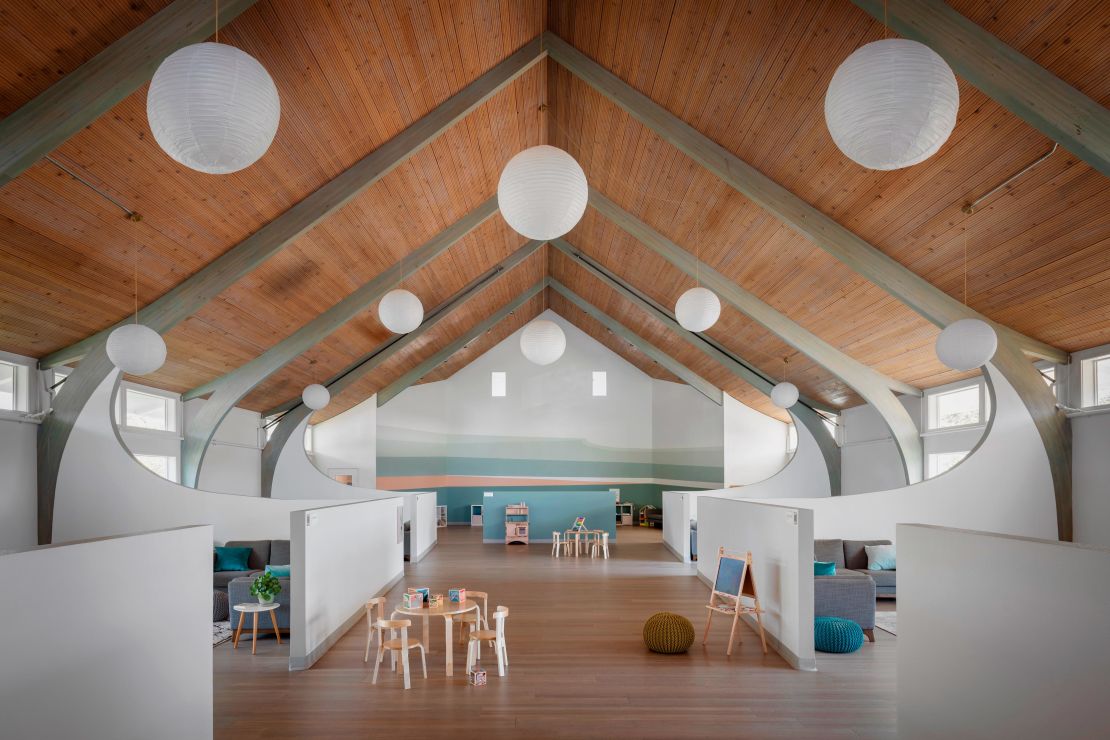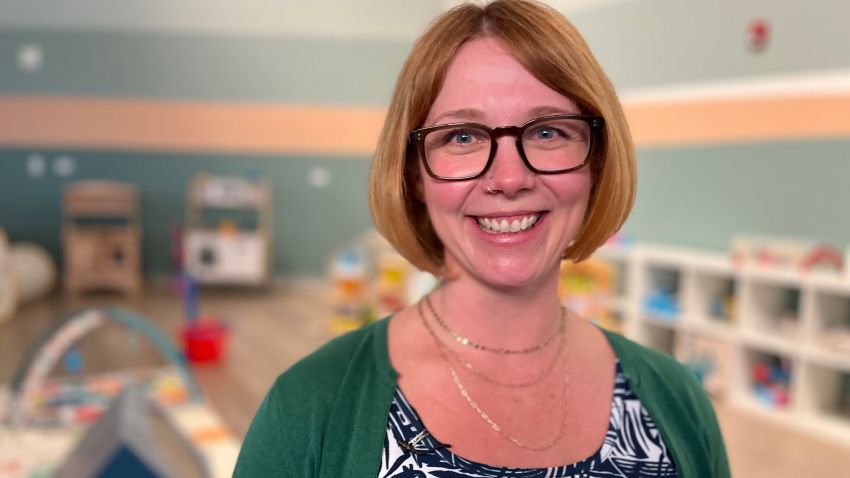Brandi Tuck had always been an overachiever. She was a straight-A student and extracurricular star, intent on becoming a high-powered lawyer in New York City.
Then, during her junior year at the University of Florida in 2004, her spring break plans fell through and it changed the course of her life.
“All of my friends were going on these community service alternative spring break trips. And I thought, ‘Nobody’s going to go to the beach with me?’” said Tuck, now 40. “So, I reluctantly signed up.”
There were several trips to choose from, each focused on a cause like HIV/AIDS, women’s rights, or the environment. But none of them spoke to Tuck. She’d done community service for years, but more out of a desire to build her resume than from any deep sense of altruism.
“I didn’t want to touch anything dirty or do anything that I felt like was going to be gross,” she recalled. “So, I picked the homelessness and poverty trip. It was the least bad of the options.”
That spring, she and a dozen other students headed to Atlanta, Georgia, to spend a week volunteering at homeless shelters. The experience was eye-opening.
“I had never been to a homeless shelter. I had never talked to someone who was experiencing homelessness,” Tuck said. “And I realized that these women are just like my mom.”

At one shelter, Tuck was entertaining children while their mothers were in a GED class. And then one young boy’s request stopped her in her tracks.
“(He) said, “Oh, I love you. Can you please not go? Stay with me,’” Tuck said. “They didn’t have a lot of attention because the moms were so stressed. And so I said ‘Okay, I’ll stay.’”
In that moment, Tuck decided to drop out of school and continue working at the shelter. But her friends argued that she should finish college. Tuck cried and agonized about her future.
“Finally, I said, ‘OK, fine. … But I promise you one day, I’ll do something about this.’”
Tuck kept her word. In 2008, she started a nonprofit, now known as Path Home, that provides shelter, support, and a host of services to families experiencing homelessness in Portland, Oregon. The organization has since helped more than 10,000 parents and children.
Living in tents, cars, and on the streets: Oregon’s unsheltered families with children
Between 2020 and 2022, Oregon saw one of the nation’s largest increases in homelessness, with numbers growing by more than 22%, according to federal data. Many of those people are unsheltered, which means they sleep in tents, cars, or on the streets.
“People are really living in squalor,” Tuck said. “And there are so many families.”
Oregon has the highest percentage of unsheltered families with children in the United States. Kitty Hernandez used to be one of them.
“My youngest son has always had a lot of health issues that have required my constant attention,” said Hernandez, 39, who says the unpredictability of the situation made it hard for her to keep a job. “He was always in and out of the hospital, making us homeless over and over.”
Hernandez and her two sons often resorted to sleeping in a tent outside.
“It’s just not safe. You can come back, find somebody in your tent. You can find your stuff gone. One day we woke up with snow caved in on top of us,” she said. “Not being able to give them a hot meal every night before they go to sleep – as a mother, it broke my heart.”
Last year, they were camped across the street from a hospital when a local man connected them with Path Home. When they arrived at the group’s shelter, they received a private room, hot meals, laundry – and a warm welcome.
“They made sure we had everything we needed and … they made us feel right at home,” Hernandez said. “It was like staying with family.”

The shelter houses 17 families with children, and they can stay for up to six months. Specialists help families find permanent housing, while case managers help people access the services they need. Classes about finances, life skills and parenting are also available. The goal is to help families regain control over their lives.
“When people think about homelessness, they don’t think about the families and the kids that we serve,” Tuck said. “70% of them work while they stay in shelter. And they’re just regular folks who are down on their luck.”
A place to heal from the trauma of homelessness
In 2018, Tuck’s nonprofit was able to buy an old church to create a new one-stop shelter. She was determined to make it an environment that would help families recover mentally as well as physically.
“When anyone experiences something as stressful as homelessness … your brain puts you into ‘fight or flight’ mode,” she said. “Over time, that turns into a trauma. It can actually rewire the brain.”
Traditional homeless shelters – often in gyms or warehouses – can be chaotic and cluttered spaces, with little privacy for families. So, Tuck worked with a local architect to create the first shelter in Oregon with trauma-informed design, which opened in 2019.
“It’s designed to give the sense of emotional, physical, and psychological safety,” Tuck said. “It helps families heal from the crisis of homelessness.”
The church’s classrooms were turned into private bedrooms for families, while the sanctuary was converted into common areas: living spaces, a library, a children’s play area, and a computer lab. The grounds include a playground, garden, picnic tables, and a basketball court. The spacious, clean, and open areas create a tranquil environment.

“It’s based on research done since the 1960s in hospitals, looking into what kinds of facilities promote better reactions among patients,” Tuck said. “Some of the key elements they’ve identified include having a connection to nature – lots of light, real plants indoors and outdoors – and building with natural materials, so we have lots of real wood. The color palette is also very calming – lots of greens and turquoises from the ocean.”
Hernandez and her two boys really appreciated the thoughtful family-friendly design and calming atmosphere.
“It’s a lot less stressful coming here,” she said. “It’s so beautiful. It doesn’t feel institutional. It feels homey.”
For Tuck, that’s the whole idea.
“It’s about helping families feel worthy (so) that they can get up and do the hard work to get their lives back on track,” she said.
Helping families move into permanent housing – and stay there
Staffers guide the families through the process and help them move into and furnish their new home. The nonprofit then provides rental assistance for a year to help families stabilize in their new situation.
“When a family gets their keys for the first time, it’s just an amazing feeling,” Tuck said. “Our goal here is that we put ourselves out of business.”
Hernandez was able to move into a two-bedroom apartment within 30 days.
“It’s nice being back in our own place. We can cook and we can hang out and do stuff that we like to do together,” she said. “(It’s) made their smiles come back.”
After families move out, the nonprofit continues to support them to make sure they can keep their homes, even when they run into unexpected challenges. Last year, they helped 360 families find housing and 87% of them kept it long-term.
That support has meant a lot to Hernandez.
“If I need help, they are there. They didn’t just say, ‘Oh, you’ve got a place,’ and then just forget about me,” Hernandez said. “They genuinely care about people.”
Smiling kids and happy parents, in homes of their own – that’s what has motivated Tuck since that spring break trip nearly 20 years ago. She is now working to expand her nonprofit’s campus to include transitional and permanent housing, and eventually hopes to replicate her program nationwide.
“Our vision is a society where every family receives the support and compassion they need to thrive,” she said. “When I see families succeed, that’s all that I need to continue doing this work.”
Want to get involved? Check out the Path Home website and see how to help.
To donate to Path Home via GoFundMe, click here






